Go beyond the temple walls and understand the “why” behind Buddhist cultures. This guide explains core Buddhist concepts like the Four Noble Truths, the Eightfold Path, Karma, and Impermanence in a simple, clear way for curious travelers.
In our first post, you learned to “read” the rich visual language of a Buddhist temple and can appreciate visiting Buddhist temples. You can now recognize the meaning behind a Buddha’s hand gesture, appreciate the symbolism of a lotus flower, and navigate a sacred space with confidence and respect.
You’ve learned the what. Now, are you ready for the why?
What are the profound ideas that inspired such breathtaking art and quiet devotion? What is the worldview that places such a high value on serenity, compassion, and letting go?
This guide will be your friendly introduction to the philosophical heart of Buddhism, known as the Dharma, or the teachings. We won’t be diving into complex theology. Instead, we’ll explore five essential concepts that, once understood, will provide a powerful new lens through which to see the world, interact with its diverse cultures, and even reflect on your own journey.
🩺 1. The Diagnosis: Understanding the Four Noble Truths
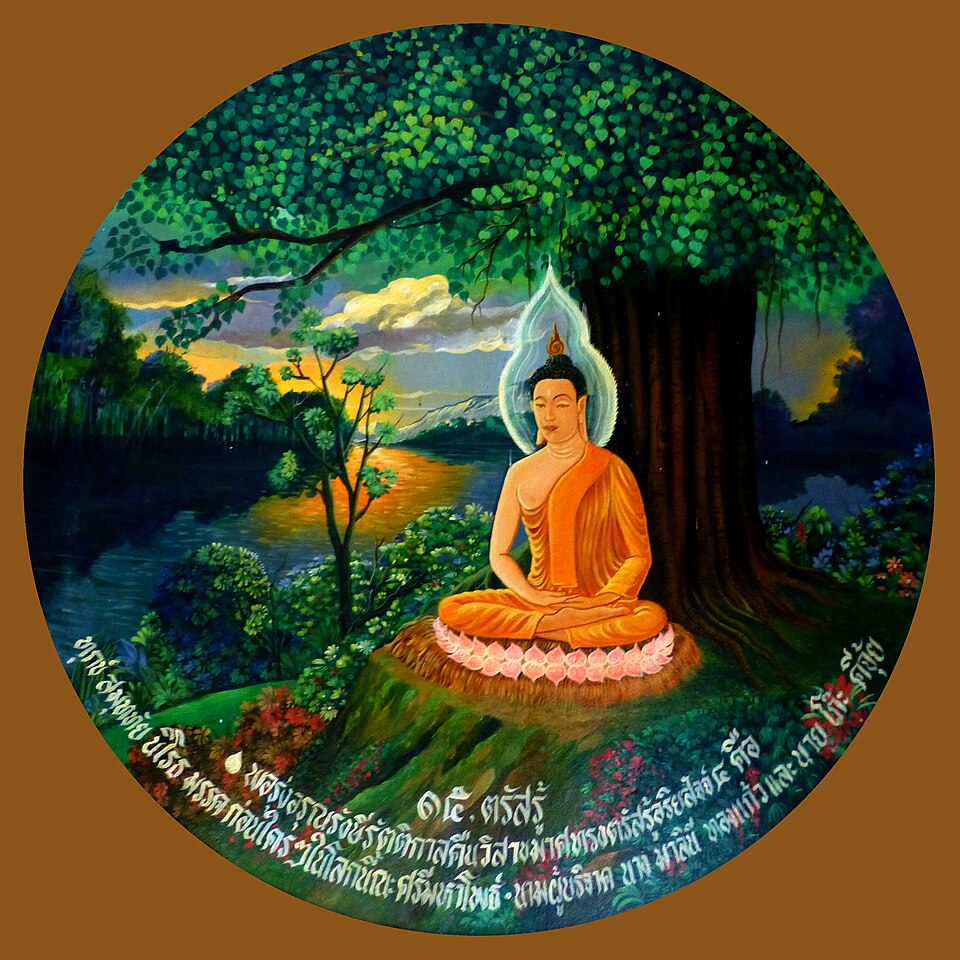
The Four Noble Truths express the basic orientation of Buddhism. They are the fundamental maps that guide one on the path. The Buddha laid out this framework in his very first sermon, not as a set of pessimistic beliefs, but as a clear, practical diagnosis of the human condition, much like a doctor diagnosing an ailment in order to prescribe a cure.
He stated that when he gained absolute and intuitive knowledge of these four truths, he achieved complete enlightenment and freedom from future rebirth.
The Truth of Suffering (Dukkha)
The first truth states that life in this mundane world is inherently dukkha. While often translated as “suffering,” that word is a bit misleading. Dukkha is a far more nuanced concept, which is why some scholars prefer to leave it untranslated. Think of it as the intrinsic “unsatisfactoriness” or “stress” of life, the fundamental insecurity of all conditioned things.
It’s not just about episodic pain. It’s the subtle but pervasive sense that things are never quite right. We want things to be other than they are, and this friction causes unease. It encompasses:
- The profound grief of loss and the physical pain of illness.
- The frustration of a missed flight or a rainy day on vacation.
- The disappointment when a pleasant experience inevitably ends.
- The vague feeling that something is “missing,” even on a perfect day.
Traveler’s Connection: This concept is a quiet superpower for any traveler. It reframes challenges. When your train is delayed, your hotel booking is lost, or a famous monument is closed for renovation, it’s easy to feel like the universe is conspiring against you. Understanding dukkha helps you see these frustrations not as personal failures or cosmic injustices, but as a natural, expected part of the human experience. It builds resilience and grace.
The Truth of the Origin of Suffering (Samudāya)
The Buddha didn’t just point out the problem; he identified its cause. The origin of our dissatisfaction, he taught, is taṇhā, a word that literally means “thirst” and is often translated as “craving,” “desire,” or “attachment.”
This is our relentless desire for things to be different than they are. We want pleasant experiences to be permanent, and we want unpleasant ones to disappear immediately. At a deeper level, this craving is fueled by the “three poisons”:
- Greed (or attachment): Trying to get something.
- Hatred (or aversion): Trying to get away from something.
- Ignorance (or delusion): Trying to tune out from reality altogether, especially the reality of our own impermanence and non-self.
Traveler’s Connection: You’ll recognize this immediately. It’s the feeling of disappointment when a landscape doesn’t live up to the spectacular photo you saw online. It’s the anxiety of trying to cram every single “must-see” sight into a rigid itinerary. It’s the desperate wish for the 12-hour bus ride to just be over. Our attachment to our expectations is the primary source of our travel-related stress.
The Truth of the Cessation of Suffering (Nirodha)
This is the good news, the prognosis for a cure. The Buddha taught that by containing, letting go of, and ultimately extinguishing this “thirst” (taṇhā), we can be free from dissatisfaction. This isn’t a state of apathy, but one of profound liberation, peace, and self-control. This cessation is called Nirvana.
The Truth of the Path to Cessation (Magga)
This is the practical prescription. The Buddha didn’t just say, “Stop craving.” He laid out a clear, actionable guide for how to do it. This guide is known as the Noble Eightfold Path.
🛤️ 2. The Prescription: A Guide to the Noble Eightfold Path
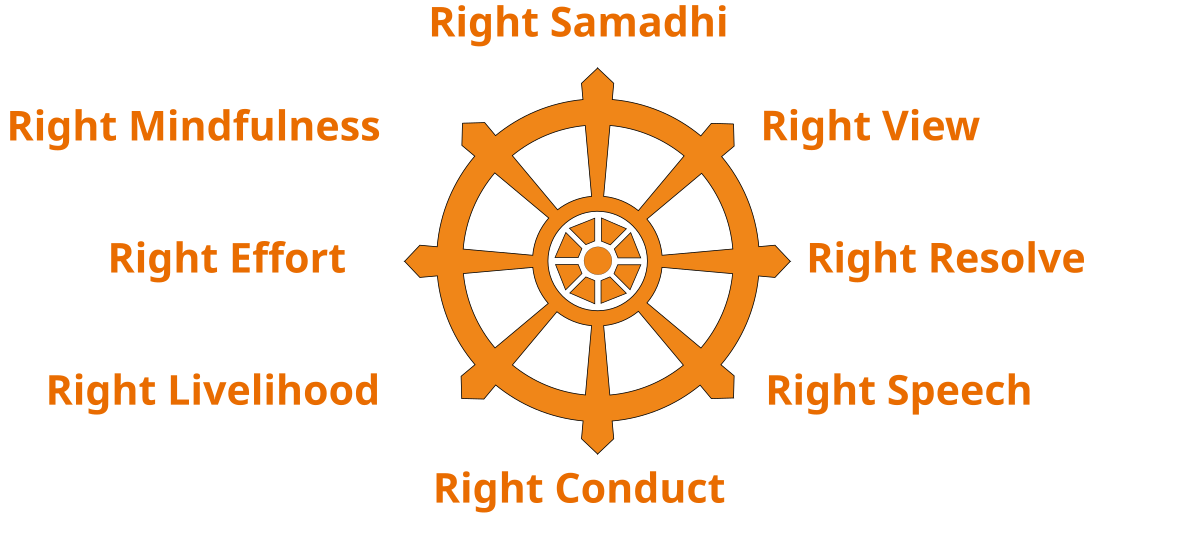
The Noble Eightfold Path is the way to end craving, dissatisfaction, and the karmic accumulations that keep us trapped in the cycle of rebirth. Think of it not as a set of rigid, linear steps, but as eight interconnected aspects of a holistic practice – a way of development that leads to full liberation.
It is traditionally grouped into three sections.
The Foundation of Wisdom (Prajñā/Paññā)
This is about seeing the world clearly.
1. Right Understanding: This involves grasping the Four Noble Truths and believing in the Buddhist principles of karma and rebirth. It’s the conviction that the Buddha taught a successful path to liberation.
2. Right Thought (or Intention): This is about consciously cultivating intentions of kindness, compassion, and peaceful renunciation. It’s about moving away from sensuality and ill-will, and for some, it is the intention to give up the home life and become a religious mendicant.
The Framework for Ethical Conduct (Śīla/Sīla)
This is about living harmoniously based on the principle of non-harming (ahiṃsa).
3. Right Speech: This means speaking truthfully and kindly. It’s about refraining from all forms of wrong speech: lying, deception, divisive talk, harsh or abusive words, and even idle chatter.
4. Right Action: This means acting in ways that are harmless. It includes abstaining from killing, stealing, and for laypeople, avoiding sexual misconduct (such as involvement with someone who is married or otherwise protected by their family).
5. Right Livelihood: This means earning a living in a way that doesn’t cause suffering to any sentient being. This includes avoiding trades in weapons, living beings, meat, intoxicants, and poison.
The Training of the Mind (Samādhi)
This is about developing inner strength and clarity.
6. Right Effort: The active, conscious effort to guard against unwholesome thoughts and to prevent mental states that would disrupt meditation.
7. Right Mindfulness: This is the heart of the practice. It means to be conscious of what one is doing, never absent-minded. It is a full awareness of the present moment, of the body, feelings, and mind, and their impermanent nature, without judgment. For a traveler, this is the ultimate skill. It’s the difference between just seeing a meal and truly tasting it; between just hearing a city and truly listening to its unique symphony of sounds.
8. Right Concentration: This is the development of deep, one-pointed focus through correct meditation (dhyāna). This practice leads to a calm, unified state of perfect equanimity and awareness, which is central to Tibetan monastic traditions and Buddhism as a whole.
⚖️ 3. The Law of the Universe: What Karma Really Is
The word “karma” is thrown around a lot, but in Buddhism, its meaning is direct and profound. Karma literally means “action.”
It’s not a system of cosmic justice or pre-determined fate. It is the natural law of cause and effect, where intent (cetanā) is key. Every intentional action, whether of body, speech, or even just a thought, plants a “seed” in the mind that will eventually ripen into a corresponding effect, either in this life or a future one.
- Wholesome Actions (Kusala Karma): Actions motivated by generosity, compassion, and wisdom lead to positive results.
- Unwholesome Actions (Akusala Karma): Actions motivated by greed, hatred, and ignorance lead to negative results.
The quality of one’s rebirth depends on the merit or demerit of one’s karma. This is why, for the vast majority of lay Buddhists, the primary focus is not on attaining nirvana in this lifetime, but on accumulating merit to ensure a better rebirth.
Traveler’s Connection: This concept is the key to understanding the vibrant cultural practice of merit-making. When you see a local in Thailand offering food to monks, a family in Cambodia donating to repair a temple, or someone in Myanmar feeding street dogs, they are consciously performing a wholesome action. This merit is believed to lead to a happier life and can even be transferred to living relatives and ancestors. It explains the deep cultural emphasis on generosity and ethical behavior you’ll witness on your travels.
🍃 4. The Nature of Reality: Impermanence (Anicca) & Non-Self (Anatta)
These two concepts, along with dukkha, are known as the Three Marks of Existence. They are the fundamental characteristics of all phenomena, and gaining insight into them is central to the Buddhist path.
Anicca: The Liberating Beauty of Impermanence
This is the fundamental truth that everything is in a constant state of flux. Nothing is permanent. The ignorance (avidyā) of this truth is a root cause of our suffering. From the destruction of elaborate sand mandalas in Tibetan Buddhism to the flower offerings in a Thai temple, the culture is filled with poignant reminders of life’s transient nature.
Traveler’s Connection: This is perhaps the most practical and liberating philosophy a traveler can adopt.
- It enhances joy: Understanding that the perfect sunset, the delicious street food, and the inspiring conversation with a stranger are all fleeting encourages you to savor them more fully.
- It builds resilience: When you’re facing a challenge, a bout of food poisoning or a feeling of loneliness, remembering anicca is a comfort. This, too, shall pass.
Anattā: The Freedom of Non-Self
This is the radical teaching that there is no unchanging, permanent “self,” “soul,” or essence in any being or phenomenon. What we perceive as “me” is just a temporary, ever-changing combination of physical and mental components (the five aggregates). The belief in a permanent self is considered an illusion, a primary cause of our struggle with reality. Realizing the truth of non-self is essential for extinguishing grasping and attaining liberation.
It’s important to note that while there is no permanent soul, traditional Buddhism affirms a continuation of consciousness after death. This mental continuum, conditioned by karma, is what carries on into a future rebirth.
Traveler’s Connection: This insight is incredibly freeing for travel. It encourages us to let go of our rigid ego and identity. It allows us to be more open, adaptable, and less defensive when things go wrong. It’s the freedom to not have to be “the person who has it all figured out.”
🕊️ 5. The Ultimate Goal: Samsara & the Liberation of Nirvana
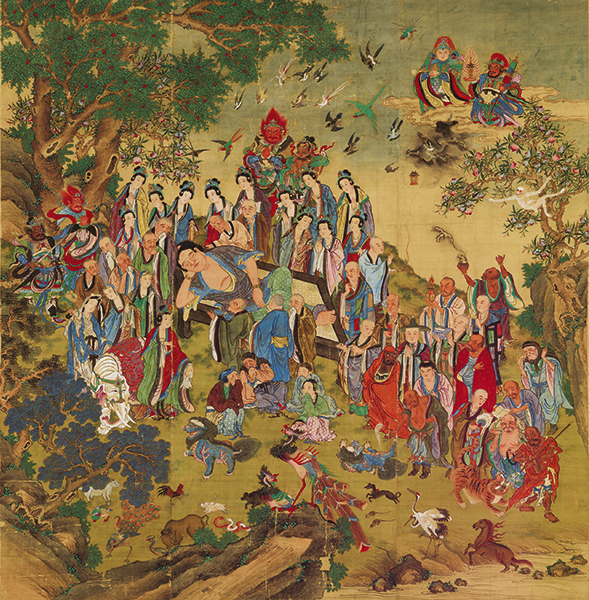
So, if life is characterized by dissatisfaction and driven by karma, what is the point of it all? Buddhism offers a clear picture of the problem and the ultimate solution.
- Samsara (The Cycle): The word literally means “wandering.” It is the endless cycle of birth, death, and rebirth through which all unenlightened beings pass. Driven by ignorance, craving, and karma, this cycle can occur across six realms of existence (from hellish to heavenly). Life within this cycle is, by its very nature, dukkha.
- Nirvana (The Liberation): The word literally means “to blow out” or “to extinguish.” It is the ultimate goal: the complete cessation of suffering and the definitive end of the cycle of rebirth. This is attained by extinguishing the “three poisons” of greed, hatred, and ignorance. Nirvana is not a heavenly place where a soul resides; it is a state of profound peace, freedom, and bliss that can be experienced. In some texts, it is described as identical with the realization of non-self (anattā) and emptiness (śūnyatā).
Traveler’s Connection: Understanding this ultimate goal adds a final layer of depth to your observations. The serene, reclining Buddha statue you saw isn’t a picture of sadness; it’s a powerful image of the Buddha attaining Parinirvana, the final, complete liberation from all suffering and rebirth. It is a symbol of the fulfillment of the spiritual path. The art, rituals, and devoted monastic life you witness are all oriented toward this profound possibility of awakening.
Do I have to be a Buddhist to appreciate these concepts?
Absolutely not. These concepts are presented as universal truths about the human condition. Think of them as a philosophical toolkit. You can use the “tools”, like mindfulness and the understanding of impermanence, to enrich your life and travels, regardless of your personal belief system.
Is Buddhism a religion or a philosophy?
It’s both, and it depends on how it’s approached. For many, it is a rich devotional religion complete with rituals and faith. For others, it is a practical philosophy and a “science of the mind” focused on ethical living and mental training. A traveler will encounter both aspects.
What’s the single most important concept for a traveler to understand?
While they are all interconnected, a deep appreciation for impermanence (anicca) is perhaps the most transformative for a traveler. It allows you to fully cherish the good moments without clinging to them, and to endure the difficult moments with grace, knowing they won’t last forever. It is the ultimate key to being present on your journey.
How do these ancient teachings relate to modern mindfulness apps and meditation?
Modern mindfulness and meditation apps are essentially secular, streamlined versions of the “Right Mindfulness” and “Right Concentration” aspects of the Noble Eightfold Path. They have taken these powerful mental training techniques from their original Buddhist context and made them accessible to a global audience for stress reduction and mental clarity. Understanding the original philosophy gives you a much richer context for these popular modern practices.
Further Reading
- r/Buddhism FAQ (Reddit) – An excellent community-maintained guide that answers common questions on meditation, karma, rebirth, schools of Buddhism, and more
- “Buddhism” (Wikipedia) – A comprehensive overview of Buddhism, including its history, core beliefs (like the Four Noble Truths and Eightfold Path), and its various traditions (Theravāda, Mahāyāna, Vajrayāna)
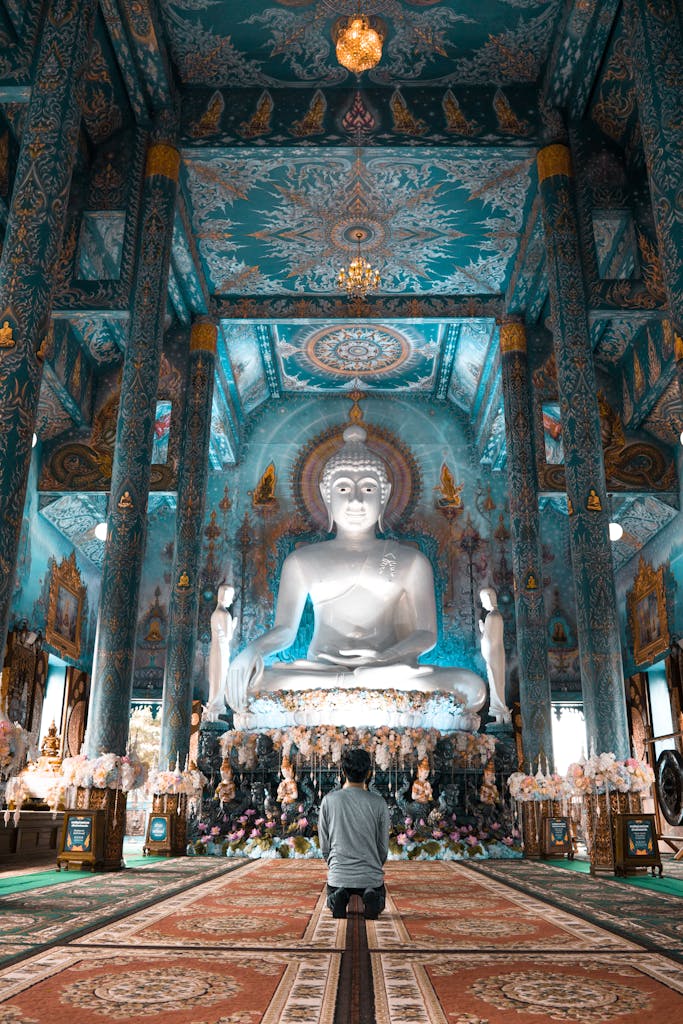
🧭 Conclusion: Employ the Core Buddhist Concepts as A New Compass for Your Journey
The Four Noble Truths, the Eightfold Path, Karma, Impermanence, and Nirvana are more than just philosophical concepts. They are a practical and profound compass for navigating not just your travels, but your life.
They provide a framework for understanding why societies are shaped the way they are, why people act the way they do, and how we can engage with the world more thoughtfully and compassionately. They transform your journey from a simple tour into a deep exploration of a worldview.
You now have the tools not just to see a culture, but to begin to understand it from the inside out.
These universal ideas form the heart of Buddhism everywhere. But how are they expressed in the unique cultural tapestry of different countries? How does the path of a Buddhist in Japan differ from one in Sri Lanka? In Part 3, we’ll explore the fascinating regional expressions of Buddhism across Asia.
Missed our first post? If you’re heading to a Buddhist temple for the first time, make sure you understand the basics of Buddhist temple etiquette and what to look out for! Or explore other ways to travel immersively in our detailed guide!
A Note on This Guide: Fostering Cultural Appreciation, Not Religious Promotion
Thank you for reading this guide! It’s important to clarify the intention behind this content.
This guide is created with the sole purpose of providing practical advice and cultural insights to fellow travelers. Our aim is to help you move beyond simple sightseeing, enabling you to understand the rich symbolism, history, and etiquette that underpin these sacred spaces. By offering context, we hope to deepen your appreciation and enrich your travel experience.
It is crucial to understand that this guide is not intended to promote or endorse any specific religion or belief system. Instead, it is a respectful exploration of cultural practices and artistic expressions from a traveler’s perspective.
Acknowledging Nuance & Welcoming Dialogue:
The world is vast and diverse, with practices and interpretations varying significantly across different traditions, regions, and countries. While we strive for accuracy and have conducted thorough research, there may inevitably be nuances, variations, or even unintentional inaccuracies in this overview.
We believe in continuous learning and collective knowledge. If you have deeper insights, corrections, or different perspectives rooted in experience or study, we warmly invite you to share them respectfully in the comments section. Your contributions help make this a better resource for all curious travelers.

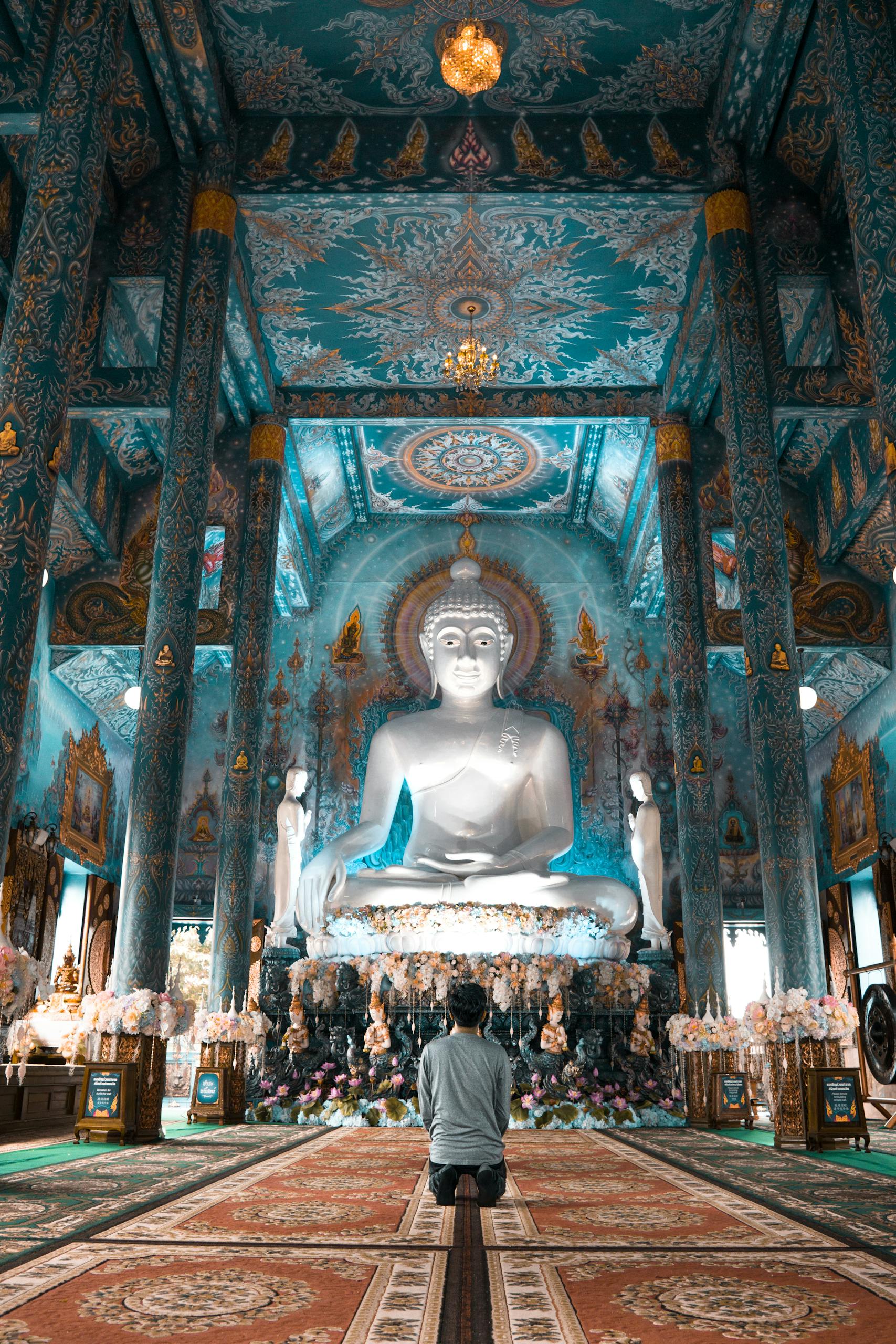
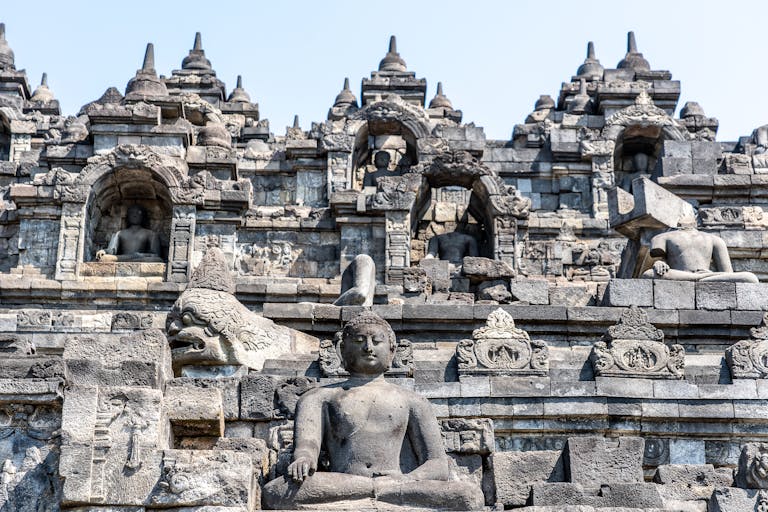



2 Comments